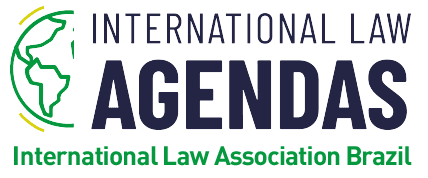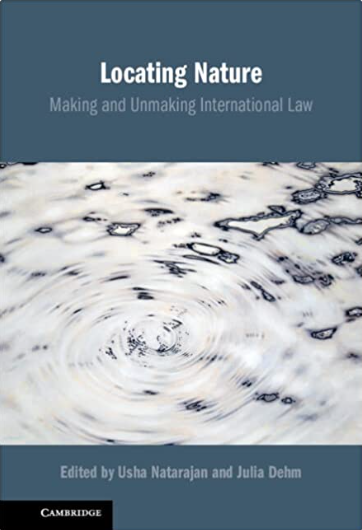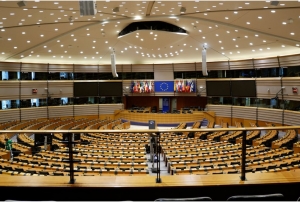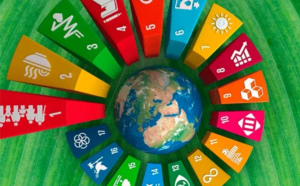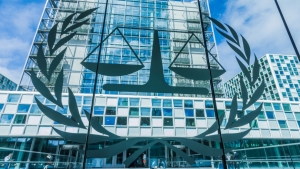Our interpretation of nature does not necessarily stand as an accurate answer to the question of what nature is in truth. Nevertheless, our response to this question has dramatically influenced the evolution of legal concepts on the environment that prove fundamental for how nature is understood and governed within the realm of international law (IL). However, considerations of the legalistic meanings of ‘nature’ and/or ‘environment’ – whether we understand the two words in the same meaning or not – are rarely discussed in the context of international environmental governance. As such, the collection of essays in Natarajan and Dehm`s edited volume, Locating Nature: Making and Unmaking International Law, offers crucial insights into this important area of concern. Employing multiple theoretical strands throughout, such as critical legal theory, hermeneutics, and postcolonialism, this volume collectively traces the current failures of international environmental law (IEL) back to the formative days of IL when the concept of nature was formed to support an anthropocentric and Eurocentric view of the world. In addition, this volume also discusses the potential of the rights of nature as an evolving movement that can offer alternative avenues of thinking about the notion of nature itself and its relationship with international law.
One aspect of this volume that shines through repeatedly is the idea that one must not limit themselves to analysing the framework of IEL as the only means of finding the roots of the relationship between IL and nature. Instead – as each essay in this volume demonstrates in one way or another – by widening our analytical scope beyond IEL so that we also consider the conceptualisation of nature in other fields of IL, we enter a stronger position to challenge the doxa adopted by IL on the meaning of nature. Such a holistic view of nature in IL enables us to understand how the foundational elements of IL, such as sovereignty, jurisdiction, territory, and development, gave impetus to the connotations of nature as natural resources. In this regard, Storr shows that, from the very beginnings of IL, defining nature in terms of a state`s rights to control and exploit natural resources within their territorial domains not only paved the path for unbridled colonisation but codified, and thus normalised, a worldview in which nature was merely a commodity to be appraised and safeguarded only in relation to its use for, and value to, humans.
As a critique of the understanding of nature embodied in the foundational principles underlying IL, Porras critically examines the works of some of the scholars often referred to as founding writers of IL, including Vitoria, Gentili, Grotius, and Vattel. She argues that the legal doctrines developed by these early legal scholars to justify the appropriation of the land and natural resources of Indigenous populations, and thus support the conditions for an international legal regime, converted the status of nature from a ‘subject’ to that of an ‘object’. This volume subsequently follows this trend of objectification from the Enlightenment onwards, revealing that the concept of nature became increasingly embedded within the concepts of sovereignty and territory used as the basis for IL. The effect of this entanglement was the partition of the planet into discrete parts of territory (according to the arbitrary lines of sovereignty) that paid no heed to the interconnectedness of nature as part of a broader ecological system.
On the other hand, as Mickelson argues, anthropocentric view of nature reflected in terra nullius and res communis doctrines practically gave states the right to exercise their power over any natural resources that fell under these respective notions, thus resulting in the intensification of environmental degradation. It is against the backdrop of this liberal conception of nature in Western IL as a resource to be exploited that IEL emerges. Just as clearly as Mayrand’s critical reasoning reveals, even upon its inception under the Stockholm Declaration of 1972, the primary body of IEL inherited a concept of nature that was heavily imbued with the liberal and neoliberal ideologies of the environment. The inability of IEL to escape the historical views of nature not only prevents IEL from moving beyond the economic instrumentalisation of environmental components as assets but continues to contribute towards the ongoing dominance of an economic understanding of nature in other discourses within the framework of IL.
The widespread characterisation of nature in economic terms recently has led IEL to follow suit, addressing questions of environmental governance in relation to ‘green economy’. As Dehm’s chapter very well indicates, this stance purports the existence of a point where humankind can utilise ecosystem services and natural resources to such a degree that society’s social and (more importantly) economic developments can still be pursued without triggering environmental degradation or ecological scarcities. However, notwithstanding the merits of this approach as a possible solution for the current issues around climate change, the concept of nature under the green economy umbrella still proves problematic. Firstly, it remains strictly anthropocentric and one-sided in its perception of nature – nature is still regarded here as a passive entity that must cater to the increasing needs of humanity, be it sustainable growth or otherwise. Secondly, the attempts of IEL to steer a path between the interests of humanity and nature implies that the two are regarded as a dualism. As shown throughout the volume, this understanding of environmental governance is inadequate and fails to develop holistic answers that integrate the needs of humans and nature as part of the same solution.
Indeed, Locating Nature reminds us that the interpretation of ‘environment’ employed in other branches of IL – such as trade, investment, or even human rights law – plays a part in the legitimisation of viewing ‘environment’ through (neo)liberal lens wherein nature is recognised as a form of resource or property. Through questioning the legal separation of the human from the natural world in the context of international human rights law, Natarajan invites international lawyers to provide a theory of human rights based on non-exploitative behaviour and non-anthropocentric ethics, one where nature is not merely perceived as a limitless providence for supporting humans’ needs at the expense of its own ecological needs. It was refreshing to see here that this synergy between nature and human rights was discussed in the light of Indigenous peoples. In particular, discussions provided by McCreary and Lamb, and also by Watson (chapters 5 and 14) shed light on the ways in which human rights were weaponised as a legal construct by the elites of global capitalism to deny Indigenous communities the ability to exert influence as sovereign subjects in IL, as well as to silence their voices on this matter at a national level. These chapters compellingly point out that this continual denial of Indigenous agency on the meaning of nature in IL has resulted in the current translation of terminology such as ‘nature’, ‘the environment’, or ‘territory’ to be associated with the European-centric and colonialism-oriented notions of commodity and property – ideas that are completely contrary to the eco-centric worldview expressed by many Indigenous societies. In light of the above, Merino offers the rights of nature movement as a new way of reframing the concept of nature, and also several authors advocate that the empowerment of Indigenous peoples to determine their relationship with the natural world is a major step towards encouraging IL to move away from its present anthropocentric treatment of nature, which needs financial, legal, and administrative support to remove legal obstacles.
As highlighted earlier, this work stands out as a unique contribution since its historical revisionism of the ideological lineage between IL and the conceptualisation of nature prior to the rise of IEL calls us to be critical when accepting current legal narratives and assumptions concerning nature. Nevertheless, it felt that this recurring suggestion of a direct linear connection between the definition of nature used in the infancy of IL and that employed by IEL today was overstated at times, neglecting the fact that notions of nature were more varied amongst the international legal order than this volume would have us suppose. Understandings of the ‘environment’ and ‘environmental protection’ in IEL are by no means rigidly fixed, but rather shift multiple times under the constant give and take between IEL and other disciplines of IL. More importantly, increased interdisciplinary dialogue over the past decades with fields outside the realms of law (e.g. science, philosophy, ecology) has exposed IEL to new models and debates that have been utilised to broaden and revise current legal approaches towards nature. In this regard then, there was a missed opportunity here to explore contemporary efforts of reappraising the concept of nature in IEL. For instance, if more focus had been given to areas such as the interpretation of multilateral environmental agreements, the interplay between national and international legislation on the concept of nature, or the decisions of arbitral or judicial entities, this work would have gained additional relevance for its readership in light of the recent development and redefinition of notions of environment in IL.
Another aspect that I found to be lacking from debates in this book is the growing agency of non-state actors (NSA) in international environmental regimes. Both IL generally, and IEL specifically, have facilitated the participation of a growing range of NSA in legal matters, recognising the importance of these actors as stakeholders and drivers behind the implementation and monitoring of international instruments and norms within a given area. However, not all NSA exert a good influence on the direction of IEL, nor is their involvement in IEL necessarily inspired by feelings of altruism. It is therefore a matter of considerable gravity to properly identify all potential NSA operating in the sphere of IEL and map out exactly how they may be shaping and/or reforming international concepts of nature. This volume would have greatly benefited from the inclusion of discussions on such a topic, for example, addressing how environmental notions in international or regional cases of litigation relevant to IEL are altered when non-state actors become involved. Doing so would have added a practical component to the volume that would then complement and balance the strong theoretical focus of the book`s discourses on the conceptualization of nature in the historical context.
Locating Nature proposes that any attempts to mitigate global environmental degradation ultimately can only be realised by revising (or even rejecting) the liberal and neoliberal ideologies that permeate the conceptualisation of nature in IL. The rectification of our environmental crisis via IEL requires more than simply the adoption of yet another new treaty or agreement. Instead, the book calls for an understanding of the social and political forces that shape the constitution and practice of IL. Indeed, as the articles in this collection invariably show, the reform (and hopefully progressive development) of IEL will not be possible without first considering and grasping the true scale of the interconnection, and by extension interdependence, between nature and society. It is only by looking behind the tempting ideals and promises espoused by postmodernity and the green economy and asking ourselves from where these principles emerged that our eyes can open to a sobering reality: IL was initially born from a need to justify the objectification of nature for the sake of capitalist cravings for natural wealth. More troublingly yet, IL remains subconsciously trapped in this mindset of nature as a commodity, thus meaning that the environmental solutions it provides will continue to be deficient or ineffective so long as it fails to embrace fundamental normative changes to its conceptualisation of nature that are based the reciprocity of the human-nature relationship and the respect of nature as an active stakeholder in IL.
Although monographs and articles may exist in the international literature about the various aspects of interactions between IL and the environment, few have addressed this topic from such a comprehensive approach as seen here, exploring the concept of nature not in the vacuum of IEL, but against its deep interconnectedness with the wider historical, social, and political forces of IL. I would highly recommend this book to anyone interested in IEL or IL alike, be they academics, students, or professionals of law. Areas of particular interest for international lawyers are its deconstruction of the concept of territory and human rights. This title also contains several chapters of high relevance for those engaged in the fields of environmental governance or Indigenous peoples’ rights. Last, but not least, the substantial contribution that this book makes to intersectional debates within the framework of IL also makes it invaluable as a resource for practitioners from other various disciplines outside the immediate confines of IL, such as environmental studies, political science, economics, philosophy, sociology, and even cultural heritage.
-

PhD Student in Public International Law, Faculty of Law and Political Sciences, Allameh Tabataba’i University, Tehran. Visiting Scholar, Faculty of Law, University of Technology Sydney, Sydney.
